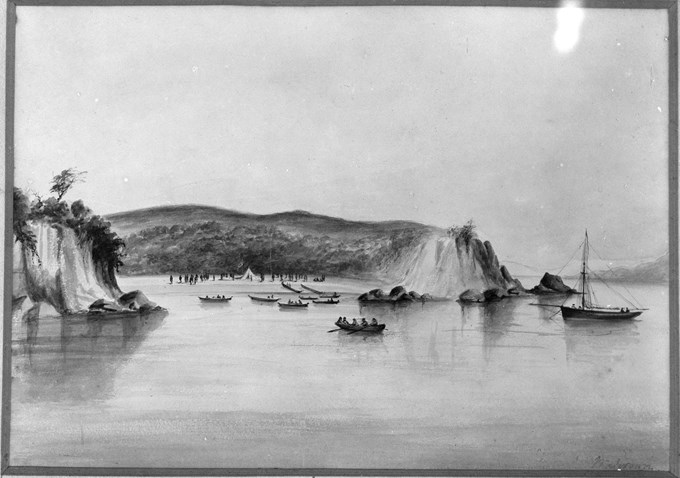Aucklanders will reflect and learn about Tāmaki Makaurau’s part in the Treaty of Waitangi story as the region honours 180 years since the first historic signing this Waitangi Day.
180 stars will shine on the Auckland Harbour Bridge in a dramatic story created in lights by Waikato-Tainui for the milestone.
The special Vector Lights for Waitangi display will show the iwi narrative in relation to the Treaty of Waitangi on the bridge for five consecutive nights from 2-6 February, ushering in regionwide commemorative activity.
On Waitangi Day itself - Thursday 6 February - four events known as Waitangi ki Tāmaki Makaurau will stretch from Manukau to the North Shore.
The events are brought to the region by both mana whenua and mātāwaka groups who work closely with Te Kaunihera o Tāmaki Makaurau / Auckland Council, demonstrating pride in the way it responds to kaupapa Māori.
Looking back to 1840, the signing of Te Tiriti o Waitangi / the Treaty of Waitangi could be described as an early example of a ‘roadshow’.
The treaty was signed at Waitangi on 6 February 1840. The historic parchment then made its way around the country in the form of nine ‘sheets’ (copies).
The treaty was first signed at Waitangi on 6 February 1840. The historic parchment then travelled around the country over the next eight months in the form of nine ‘sheets’ (copies) at the request of Lieutenant-Governor William Hobson. These nine sheets were taken by missionaries and British officials to 45 locations across Aotearoa where the signatures from over 500 Māori chiefs were collected at hui.
The sheets were circulated around Aotearoa in multiple ways. Some are thought to have come by foot, others by sea and some carried by waka along the rivers. Historians today imagine there was debate, consensus and dissent, but little is written about the exact nature of this kōrero.
Waikato Heads, Manukau Heads and Karaka Bay were among Auckland’s significant signing sites 180 years ago. It was said that a ‘woman of rank’ Hoana Riutoto was among the 39 signatories to the Waikato-Manukau Sheet witnessed by a gathering of 1500 Māori at Waikato Heads in late March 1840.
In recognition of Manukau’s history as a treaty signing location, the Waitangi ki Manukau event returns to Hayman Park this year, presented by Auckland Council in partnership with Manukau Urban Māori Authority.
“Te Kaunihera o Tāmaki Makaurau Auckland Council is very proud of the way it works collaboratively with both mana whenua and mātāwaka to ensure that this significant time in New Zealand’s nationhood is commemorated every year,” says Councillor Alf Filipaina.
Auckland Council’s Ataahua Papa notes: “The organisers of each of the main events have worked alongside each other to ensure that all areas of Auckland are represented through this year’s commemorations.
"For the first time, we are pleased to have an event on the North Shore. Waitangi ki Tāmaki Makaurau and Vector Lights for Waitangi will bring fitting recognition to the 180th year of Te Tiriti o Waitangi.”


